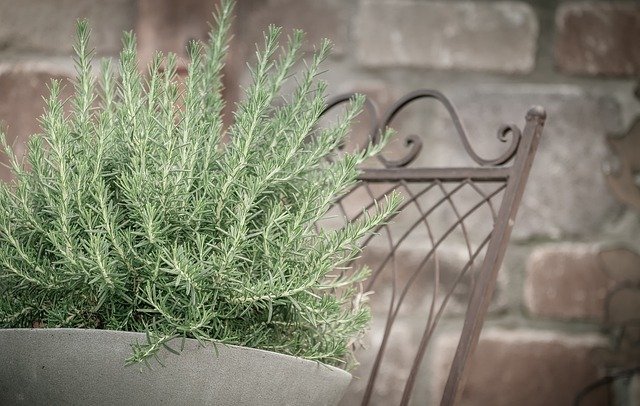Last updated on September 28th, 2023 at 07:42 am
During our early childhood, we have been told by many scientists that plants release carbon at night. There are no health reasons for keeping plants in your home. But these ideas are not 100% true.
There is another exception. Various plants release oxygen during sleep. Until now you may understand that plants in the daytime do photosynthesis using CO2 and create byproducts of this synthesis. The respiratory system releases Carbon Dioxide during the evening.
But some plants take it to another level by not only producing O2 during the day but also at night.
According to a reserach paper published in 2015 by Akshay Srivatsan at Cyberjournals, the best plants which produce the most oxygen at night time (10 pm to 6 am) are Yucca and Banana.

The above is a screenshot from one of the findings in the paper which you can read here. As you can see from the graph, Yucca is the highest night-time oxygen producer plant amongst the list of plants closely followed by the Banana plant. Of course, there are other plants that can be as beneficial as those included in the research, here are they:
Table of Contents
Which plants give oxygen 24 hours?
Among these 13 indoor plants, some of them are not only oxygen-makers at night but also help to purify the air. They absorb toxic gases and release fresh oxygen. So having these around will ensure you have good quality sleep and also reduce the chances of several diseases. So which plant gives oxygen 24 hours:
1. Yucca
Yucca is a net producer of oxygen plants. What does that mean?

A “net producer” means that the plant produces more of a particular substance (in this case, oxygen) than it consumes or uses during a specific time period. In the context of the table, when a plant is labeled as a “net producer of oxygen,” it means that, on balance, the plant is releasing more oxygen into the surrounding environment than it is taking in or using through processes like respiration.

Besides its amazing oxygen production property, Yucca is also an excellent choice as an indoor plant.
Its low-maintenance nature makes it a favorite among indoor gardening enthusiasts. Yucca can withstand periods of neglect and doesn’t require frequent watering, making it ideal for individuals with busy lifestyles or those who may not have a green thumb.
This adaptability extends to its tolerance for a variety of light conditions, from bright, indirect sunlight to moderate low light. It can thrive in different rooms within your home, adding a touch of natural beauty to any space.
2. Banana
Bananas might not be a popular choice of houseplant amongst other plants in this list but as you can see from the research above, with that amazing property of emitting O2 at night you might need to reconsider your choice for indoor plants.
another reason why this plant is not popular as an ornamental specimen is the difficulty of keeping this plant alive indoors.

Growing bananas indoors presents challenges due to their size, light requirements, and need for high humidity. Banana plants can become quite large and demand up to 12 hours of bright, indirect light daily, which can be hard to provide indoors, especially in winter.
Additionally, indoor environments typically have lower humidity levels than bananas prefer.
Space, temperature, and fruit production are further considerations. These plants require room for their root systems and warm, stable temperatures above 55°F (13°C) year-round. While growing them indoors is possible, achieving fruit production is complex, and often better suited to controlled environments like greenhouses or tropical outdoor settings.
Successful indoor banana cultivation demands the right conditions and dedication, making it a rewarding but challenging endeavor. Choosing the right cultivar which is more adaptable to indoor conditions is also important.
Several species and varieties of bananas are popular for growing as ornamental houseplants due to their attractive foliage and relatively manageable size. Some of the common ones include:
- Musa acuminata ‘Dwarf Cavendish’: This dwarf banana plant is a popular choice for indoor cultivation. It typically reaches a manageable height of around 3 to 4 feet and produces large, lush green leaves.
- Musa acuminata ‘Super Dwarf Cavendish’: This is an even smaller variety, often growing to about 2 to 3 feet in height. It’s well-suited for smaller indoor spaces.
- Musa ‘Truly Tiny’: As the name suggests, this banana plant remains compact, with a height of around 2 to 3 feet. It’s known for its striking red markings on its leaves.
- Musa ornata (Flowering Banana): While it’s not grown for its fruit, this banana plant is prized for its ornamental value. It produces attractive pink to purple flowers and hasvariegated leaves.
- Ensete ventricosum (Abyssinian Banana): This species is appreciated for its large, dramatic foliage. While it can grow quite tall, it’s often grown as an ornamental for its impressive leaves.
- Musa velutina (Pink Banana): This species is known for its small size, pink bananas, and ornamental value. It’s a popular choice for indoor growing, especially in regions with colder climates.
When selecting a banana plant for ornamental purposes indoors, it’s essential to consider your available space, lighting conditions, and the ultimate size of the plant. Additionally, providing adequate humidity and warmth is crucial for their success as houseplants.
While these ornamental banana plants may not typically produce edible fruit, they can significantly help with the air quality of your indoor spaces as they are also Net producers.
3. Snake Plant
The snake plant is the super plant that we chose the be one of the best indoor plants to purify the bedroom’s air as we discussed in the previous article.

The snake plant, also known as the mother-in-law’s tongue, is a hardy succulent that is easy to care for and adapts well to a variety of environments. One of the most popular houseplants, the snake plant is known for its ability to release oxygen not only during the day but also during the night. This makes it an ideal plant to keep in a bedroom, as snake plants can help purify the air and promote a restful night’s sleep.
In addition to its oxygen-producing capabilities, the snake plant is also known for its ability to remove toxins from the air. Studies have shown that it can help remove formaldehyde, benzene, and other pollutants from indoor environments. As a result, snake plants are often recommended as a plant for people with allergies or asthma. With its easy care and many benefits, it is no wonder that the snake plants are one of the most popular houseplants around.
4. Areca Palm Plant
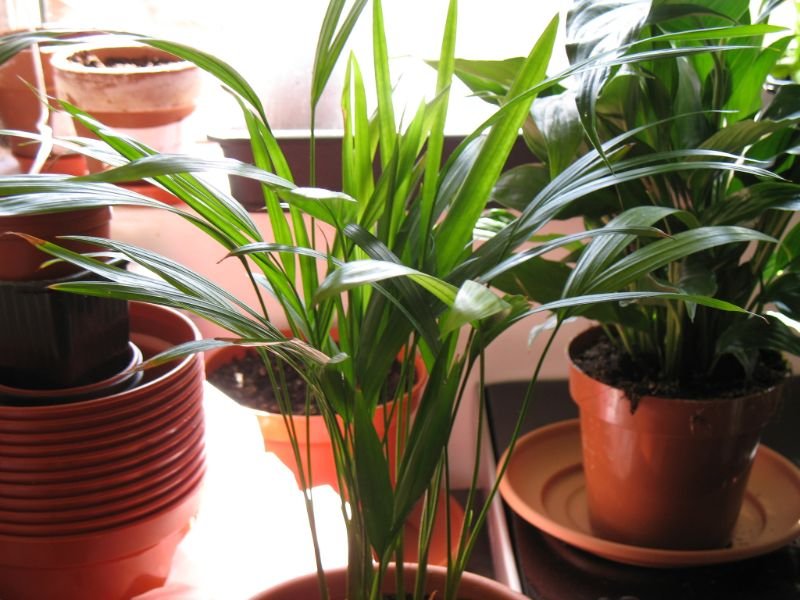
The Areca Palm plant is a wonder plant! Not only does it release oxygen during the day, but it also produces oxygen at night. That’s right – this plant is a true 24/7 oxygen factory! And that’s not all – the Areca Palm is also known for its ability to improve air quality and help filter out harmful chemicals. In fact, this plant is so effective at cleansing the air that it has been used in hospitals and nursing homes to help improve the air quality for patients.
So why is the Areca Palm one of the best plants to keep in your bedroom? Well, for starters, its oxygen-producing abilities can help you breathe easier and enjoy a good night’s sleep. Additionally, the Areca Palm’s calming effect can help reduce stress and anxiety levels. And if that wasn’t enough, this beautiful plant also makes a great addition to any room – its lush leaves and striking appearance are sure to add a touch of style to any space.
5. Neem Plant
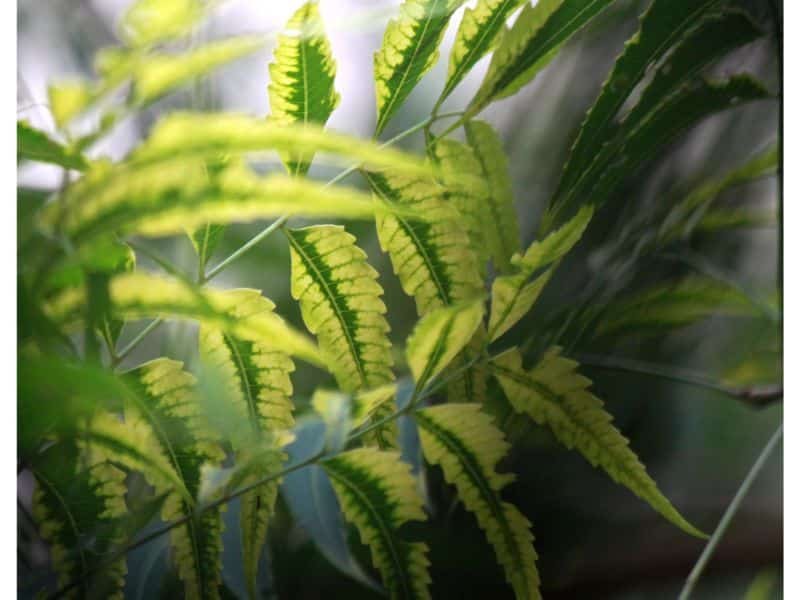
The Neem plant is a true gift to the world. Not only does it has oxygen during the day, but it also releases oxygen at night. This makes the Neem plant one of the best plants to keep in your bedroom. Not only will you get the benefit of fresh air, but you’ll also get the benefit of Neem’s other benefits.
Neem Tree is known for its antimicrobial properties, making it an ideal plant to keep in your bedroom if you’re worried about germs. It’s also known for its ability to reduce stress and promote relaxation. And if that wasn’t enough, Neem Tree is also known for its beautiful aesthetic appeal.
6. Aloe Vera plant

Aloe Vera plant is an amazing plant not only because it is one of the plants that give oxygen during the day, but also at night. This plant is one of the best to keep in your bedroom based on its benefits, care, and aesthetic look. Aloe Vera plants are known for their ability to purify the air and improve circulation.
The plant also helps to reduce stress levels and promote a sense of well-being. In terms of care, Aloe Vera is relatively easy to care for and does not require a lot of attention. The plant can be placed in a sunny spot or in indirect sunlight. When it comes to watering, Aloe Vera should be watered when the soil is dry to the touch. As for its aesthetic appeal, Aloe Vera is a beautiful plant that can add a touch of elegance to any room.
7. Money Plant (Devil’s ivy)

While most plants give oxygen during the day, the money plant also produces oxygen at night. This makes it an ideal plant to be grown indoors, as it can help to improve oxygen levels and promote better sleep. In addition to its oxygen-producing abilities, the money plant is also known for its low-maintenance care requirements.
It can take indirect sunlight and can be easily propagated from cuttings. Additionally, the money plant has a pleasing aesthetic, making it a popular choice for home decor. Whether you are looking for a plant to improve your air quality or simply want to add a touch of green to your home, the money plant is an excellent choice.
8. Tulsi (Holy Basil)
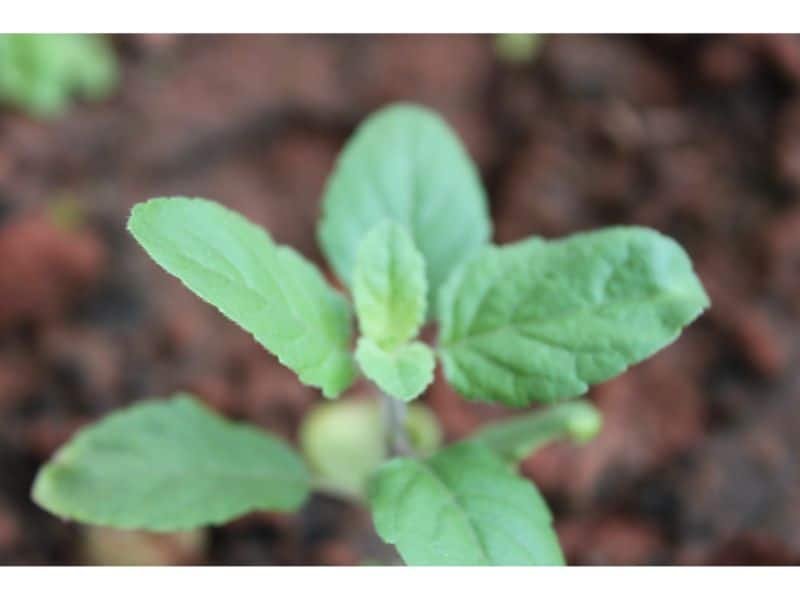
Tulsi, also known as Holy Basil, is a popular plant in India that is revered for its religious and medicinal properties. The plant is considered sacred by Hindus and is often planted near temples or homes. Tulsi is also known for its ability to make the air breathable not only during the day but also during the nighttime. This makes it an ideal plant to keep in your bedroom, as it has more health benefits.
In addition to its oxygen-producing capabilities, Tulsi is also known for its ability to volatile organic compounds from the air and improve indoor air quality. The plant is easy to care for and can thrive in most climates. Tulsi also has a pleasant aroma and makes a beautiful addition to any home.
9. Gerbera Daisy

Gerbera daisy is one of the best plants to keep in your bedroom not only because of how beautiful it is but also because it is an oxygen-maker at night. Most plants only create oxygen as a byproduct during the day, but Gerbera daisy continues to work hard even when the sun goes down. This means that you can enjoy fresh, oxygen-rich air even while you sleep.
In addition to its respiratory benefits, the Gerbera plant is also an attractive ornamental plant since it is one of the most popular flowering plants with shallow roots that can grow indoors. Just be sure to give it plenty of sunlight and water, and the Gerbera plant will reward you with lovely blooms and sweet-smelling air.
10. Dragon Tree (Dracaena draco)
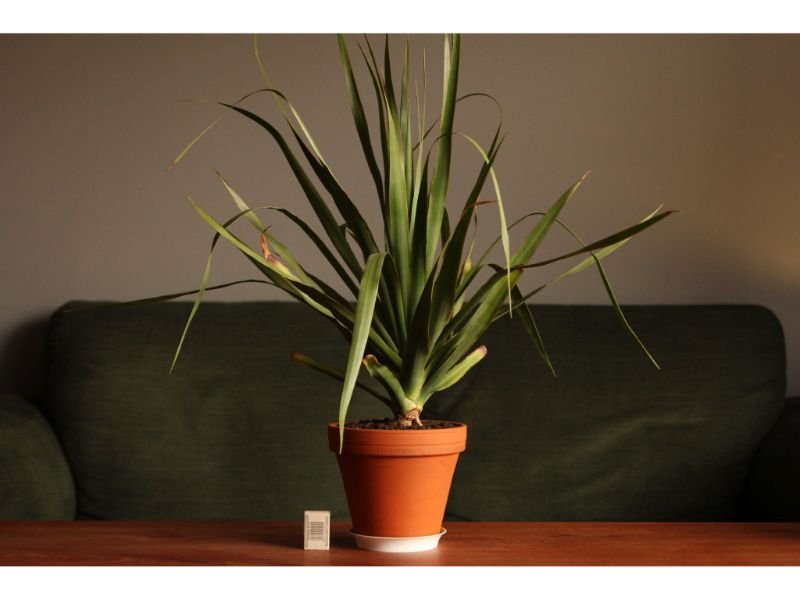
There are many reasons to love dragon trees – they’re easy to care for, they look great, and they emit oxygen not only during the day but also at night. That’s right – this amazing plant doesn’t just photosynthesize during the day like most other plants. It actually continues to pump oxygen even when it’s dark out, making it the perfect plant to keep in your bedroom.
Not only will it help you breathe easier at night, but it will also help purify the air and improve your overall health. So if you’re looking for a plant that is both beautiful and beneficial, a dragon tree is a perfect choice.
11. Rubber plant (Ficus elastic)
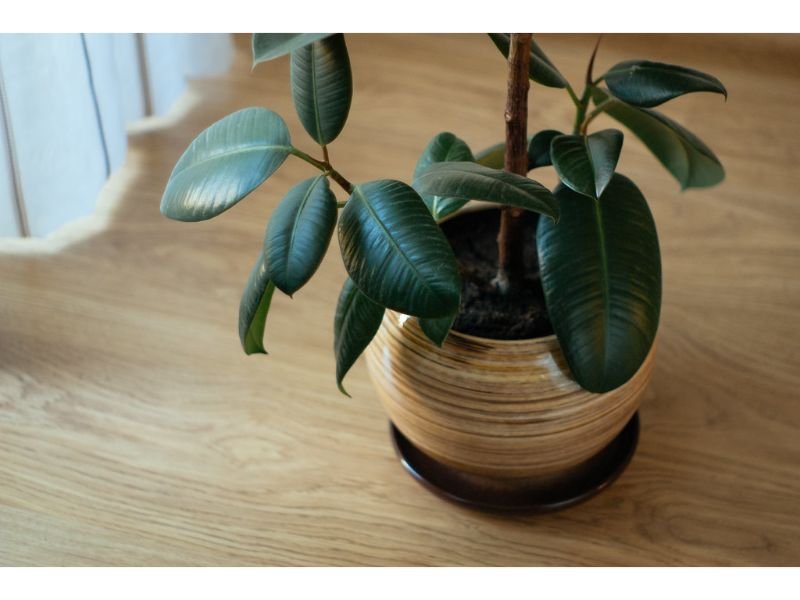
The rubber plant (Ficus elastica) is a popular houseplant that is prized for its large, glossy leaves. But did you know that this plant can also help to improve the air quality in your home? That’s right – the rubber plant releases oxygen not only during the day but also at night.
In fact, they are one of the few plants that continue to photosynthesize during periods of low light. This makes them an ideal choice for bedrooms, as they can help to purify the air and improve sleep quality. But that’s not all – rubber plants are also relatively easy to care for, and their striking appearance can help to liven up any room. So if you’re looking for a plant that is both beautiful and beneficial, the rubber plant should be at the top of your list.
12. Weeping Fig (Ficus benjamin)
Next on the list of indoor plants that give oxygen at night is Weeping Fig.

The weeping Fig, also known as the Ficus tree, is a species of fig tree that is native to Southeast Asia. The tree gets its name from the fact that it produces oxygen not only during the day but also during the nighttime. This makes it an ideal plant to keep in a bedroom, as it can help to purify the air and promote better sleep.
The Weeping Fig is also easy to care for, requiring only occasional watering and pruning. And, thanks to its lush foliage and graceful shape, the tree makes a beautiful addition to any home. So if you’re looking for a plant that is both functional and aesthetically pleasing, the Weeping Fig is a perfect choice.
13. Peace Lily
The peace lily is one of the plants that give oxygen abundantly.

The Peace Lily is not only an attractive plant, but it is also an excellent choice for purifying the air in your home. Unlike other plants that pump oxygen only during the day, the Peace Lily continues to produce oxygen at night, making it ideal for placing in your bedroom. In addition to its ability to emit oxygen, the Peace Lily also removes toxins such as formaldehyde and carbon monoxide from the air.
As a result, it can help you to breathe easier and sleep better at night. This plant is also relatively low-maintenance, requiring only occasional watering and occasional fertilization. With its attractive white flowers and its ability to improve the quality of the air in your home, the Peace Lily is a plant that is well worth considering.

How can some plants keep producing oxygen at night?
In the process of photosynthesis, plants produce oxygen gas as a waste product. This gas is released into the air through the plant’s stomata, tiny openings in the leaves that also allow carbon dioxide to enter. While most plants perform photosynthesis during the day, there are a few that continue to produce oxygen at night. These plants have adapted to do this in a number of ways.
Stomatal Adaptations
Some oxygen-producing plants have developed unique adaptations in their stomata. These specialized stomata open during the night and close during the day. This reversal of the typical pattern allows these plants to release oxygen even in the absence of sunlight.
Energy Storage Mechanisms
Another fascinating adaptation involves the storage of energy acquired during the day for nighttime use. Certain plants, like succulents, store energy in the form of compounds like malic acid. During the night, they utilize this stored energy to continue photosynthesis and produce oxygen, ensuring a constant supply of fresh air.
Calcium’s Role
Calcium plays a crucial role in the ability of some plants to produce oxygen at night. These plants use calcium ions to store excess energy from sunlight. When darkness falls, they draw upon this stored energy to drive the photosynthesis process, maintaining the flow of oxygen.
Understanding these adaptations allows us to appreciate the extraordinary world of oxygen-producing plants that defy the odds by providing us with this life-sustaining element even in the darkest hours.
Benefits of Oxygen-Producing Plants
Indoor plants have long been cherished for their aesthetic appeal, but their benefits go far beyond adding a touch of greenery to your living spaces. In this chapter, we delve into the myriad advantages of oxygen-producing plants, shedding light on their remarkable impact on your well-being and the environment.
Improved Air Quality for Healthier Living
One of the most significant benefits of oxygen-producing plants is their ability to enhance indoor air quality. These green allies act as natural air purifiers, removing harmful pollutants and toxins, such as formaldehyde and benzene, from the air you breathe.
Key Benefits:
- Toxin Removal: Oxygen-producing plants absorb and neutralize indoor pollutants, leading to cleaner air.
- Allergy Relief: Reduced allergens in the air can alleviate allergy symptoms for a healthier, more comfortable living environment.
- Respiratory Health: Cleaner air can improve respiratory function and reduce the risk of respiratory illnesses.
Enhancing Sleep Quality with Nighttime Oxygen
Good quality sleep is crucial for overall health, and oxygen-producing plants can play a significant role in improving your sleep patterns. Unlike most plants that release oxygen only during the day, certain oxygen-producing plants, as discussed in the previous chapter, continue to release oxygen throughout the night.
Key Benefits:
- Continuous Oxygen: Nighttime oxygen-producing plants ensure a steady supply of oxygen, which can lead to better sleep quality.
- Relaxation: The presence of plants in your bedroom can create a calming and stress-reducing atmosphere, conducive to sleep.
- Increased Alertness: Better sleep quality can lead to increased daytime alertness and productivity.
Reducing Stress and Anxiety Levels
The calming effect of indoor plants extends beyond their visual appeal. Studies have shown that tending to and simply being around plants can reduce stress, anxiety, and even depression. This psychological benefit, often referred to as “horticultural therapy,” is a valuable aspect of indoor plant ownership.
Key Benefits:
- Stress Reduction: The act of caring for plants can be therapeutic and serve as a form of relaxation.
- Improved Mood: The presence of greenery can boost your mood and create a more positive atmosphere.
- Biophilic Connection: Being close to nature, even indoors, can promote a sense of well-being and connection to the natural world.
Aesthetic Appeal and Home Decor
While the health benefits of oxygen-producing plants are substantial, let’s not forget their role in enhancing the aesthetic appeal of your home. The varied shapes, sizes, and colors of indoor plants can complement your interior design, adding a refreshing and harmonious touch to your living spaces.
Key Benefits:
- Home Decor Element: Indoor plants can serve as living decor, adding beauty and vibrancy to any room.
- Personalization: Choose plants that align with your interior design style, from minimalist to bohemian.
- Versatility: There’s an oxygen-producing plant for every corner of your home, whether it’s a well-lit living room or a cozy bedroom.
As you continue your journey into the world of oxygen-producing plants, remember that they are more than just green companions; they are allies in promoting a healthier, happier, and more beautiful living environment.
Elevate Your Indoor Environment with 24-Hour Oxygen
In a world where indoor living has become the norm, it’s paramount to create spaces that promote health and well-being. Oxygen-producing plants are your allies in this endeavor. Their quiet, consistent work goes beyond mere decoration—they contribute to cleaner, healthier air, and a sense of tranquility.
As you integrate these remarkable plants into your life, consider how each one enhances your surroundings. Picture the Snake Plant guarding your bedroom with nighttime oxygen, the Areca Palm gracing your living room with lush greenery, and the Peace Lily purifying your home’s air.
Imagine the collective impact of these botanical heroes: improved air quality that reduces the risk of respiratory issues, deeper, more restful sleep, and a serene atmosphere that melts away stress.
In closing, remember that the journey doesn’t end here; it’s just the beginning. As you care for your oxygen-producing plants, they, in turn, will care for you. So, embark on this green adventure, and elevate your indoor environment with the gift of 24-hour oxygen. Your health and well-being will thank you, and your home will flourish as a haven of beauty and vitality.

Gardening is my passion and growing plants indoors has always been a stress relief for me. Grow a banana tree in my apartment once (although failed to produce bananas).





